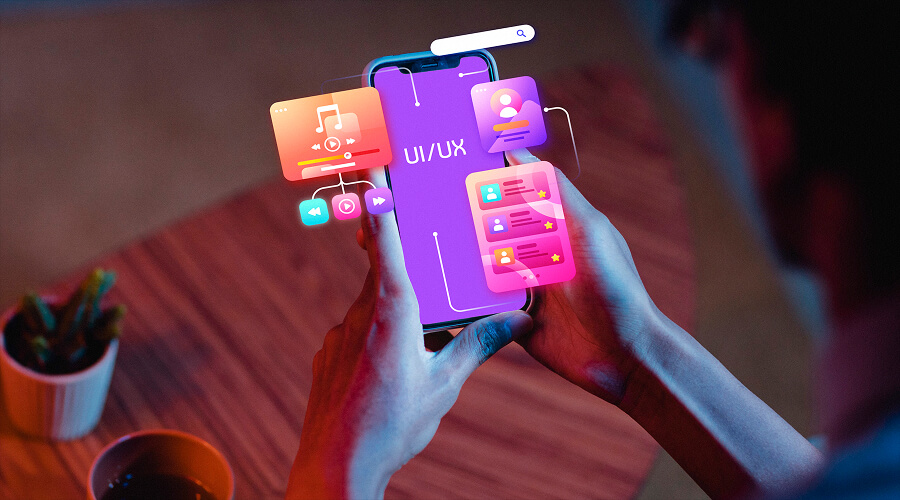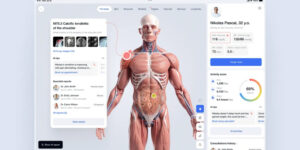
This article breaks down 35 data-backed UX statistics that show how speed, clarity, accessibility, research, and personalisation shape user expectations in 2025. Learn how UX is able to directly influence conversions, retention, product decisions, and long-term business growth.
We are at a point where user experience no longer sits in the background of product strategy. It defines it. Teams used to treat UX as a design layer. Now? Teams take it as a core operational function because customers reward speed and usability with loyalty and punish friction instantly. In 2025, the market shows a very clear pattern of where things are headed. Companies that treat UX as a measurable, data-backed discipline grow faster and retain more users.
These 35 UX statistics capture the direction of the industry this year, and more importantly, the decisions product teams must take to stay relevant in an environment shaped by rising expectations and shortening attention spans within an intense digital playground.
UX drives customer retention and brand trust

- Companies lose about $3.7 trillion annually owing to poor customer experiences across digital touchpoints. Users abandon experiences that slow them down or create uncertainty.
- A friction-heavy experience pushes 32% of customers to stop engaging with a brand after a single encounter.
- Clear UX reduces customer churn by up to 25%. Especially true for subscription based industries like fintech and SaaS.
- Improved UX can lift customer satisfaction scores by over 20%, according to enterprise product psychology studies.
- More than 52% of all users avoid a brand after one negative mobile experience.
Taking a look at these numbers, we see a simple truth emerge. Users decide faster than ever. If the interaction does not deliver instant clarity, they disappear with no warning.
UX investments deliver direct financial returns
- Every $1 invested in UX generates up to $100 in return through higher conversion rates and reduced support overhead.
- Strong UX can increase a site’s conversion rate by up to 200%.
- In e-commerce, UX optimization alone contributes to 35% of revenue growth for high-performing brands.
- Companies that integrate UX research early in the product cycle cut development costs by up to 50% because teams avoid expensive redesigns.
- Improved form design reduces abandonment by up to 55%, especially on checkout and lead-gen pages.
Businesses that track UX as a financial metric see lower acquisition costs and higher lifetime value. UX has indeed become a new growth lever.
Users expect fast, predictable, low-friction digital journeys
- 88% of all users say that they will not return to a site that feels sluggish.
- A 1-second delay can reduce customer satisfaction by 16% and cut conversions by 7%.
- Only 12% of users say they tolerate slow or visually cluttered experiences.
- 70% of customers abandon carts due to friction. Factors like complicated flows, unexpected fees, confusing instructions, and poor interface visibility are all contributing factors.
- Mobile-first performance matters. 53% of all browsing now happens on mobile, and users reject any flow that feels unoptimised for mobile devices.
Speed is much more than how long it takes for the website to load. It also covers things like cognitive speed (how quickly a user understands the next step). In 2025, UX depends on eliminating mental effort at every stage.
UX research has become a non-negotiable function

- 65% of product teams run continuous UX research programs to identify behaviour patterns and friction points.
- Companies that embed research in their workflow ship successful features twice as fast as teams that rely on assumptions.
- 74% of high growth companies run qualitative and quantitative research before major launches.
- Session recordings and behaviour analytics adoption grew by over 40% in the last two years.
- UX researchers report that micro-interactions, like tiny design details such as hover states, button responsiveness, and subtle cues, all directly influence user satisfaction.
Teams understand very well that design intuition is super helpful, but with data, they have the confidence to act. UX research exposes the real difference between what teams believe users do and what they “actually” end up doing.
Accessibility has become a core UX mandate
- Over 1.2 billion people live with some form of disability, making accessibility a revenue multiplier.
- Accessible sites earn up to 15% higher user retention across global markets.
- 71% of users leave a site that does not support basic accessibility standards.
- WCAG-compliant interfaces cut customer support tickets by up to 30%.
- Brands that ignore accessibility risk legal exposure too. Most note an increase of over 20% year-over-year in accessibility lawsuits.
UX and AI convergence reshape product expectations
- By 2025, nearly 80% of all digital products will integrate some form of AI-driven personalization.
- Personalized UX increases conversion rates by up to 400% for high-intent customer segments.
- Over 60% of users trust a digital product more when it displays clear, contextual guidance powered by AI.
- AI-powered onboarding flows reduce time-to-waste by 35%.
- AI-assisted design tools cut prototyping time by up to 45%. This is what has allowed designers to experiment faster.
AI is not a substitute for human creativity. What it does is accelerate decision-making by producing variations and insights that design teams can refine and implement.
Navigation, layout, and information architecture still matter most

- 76% of users say intuitive navigation determines their first impression of a digital product.
- Poor information architecture remains a leading cause of user frustration, accounting for 42% of negative feedback.
- Users form an opinion about a site in 0.05 seconds. Primarily driven by layout clarity and visual hierarchy.
- Eye-tracking studies show that users focus on actionable content for only 3 to 5 seconds before deciding their next step.
- Simplifying navigation labels, reducing clutter, and tightening copy improves engagement by up to 28%.
Design trends continue to evolve and change, but the fundamentals never lose importance. Users rely on predictable structures to move confidently.
What does these stats mean for teams in 2025?
UX has become an operational pillar. Not just a design add-on Each number in this list exposes a deeper shift in how users behave, how products evolve, and how businesses operate.
Three conclusions define the UX landscape in 2025.
➢ Users punish friction instantly
Teams must invest in clarity, speed, mobile optimisation, and predictable flows. Every second of delay and every unclear step risks revenue.
➢ Research drives better product decisions
Assumption-driven design belongs to the past. Companies that measure behaviour, test hypotheses, and observe real users outperform those who guess their way through product cycles.
➢ Accessibility and personalisation now shape user expectations
AI improves guidance and personalisation. Accessibility features open products to broader audiences. Both approaches improve retention, reduce churn, and boost user confidence in the brand.
UX in 2025 is all about continuous learning and adoption. Users decide in a few seconds and their expectations grow faster than design trends. Teams that act early, validate assumptions, improve flow clarity, and embrace accessibility stand at the very front of the market. The numbers paint a very clear picture. UX defines the experience, and the experience defines the business.






